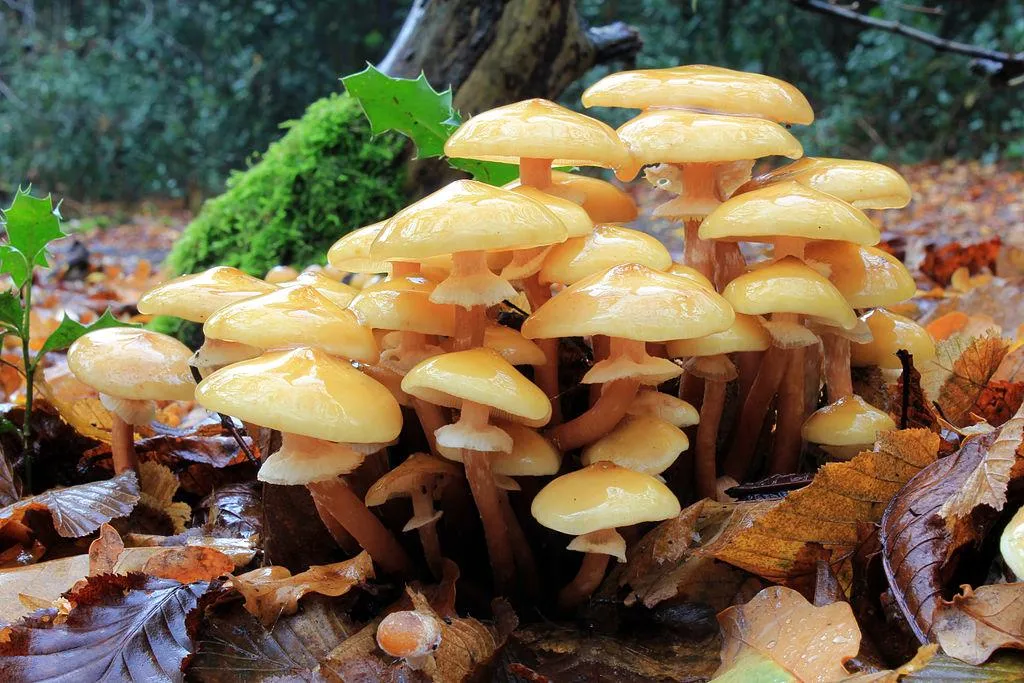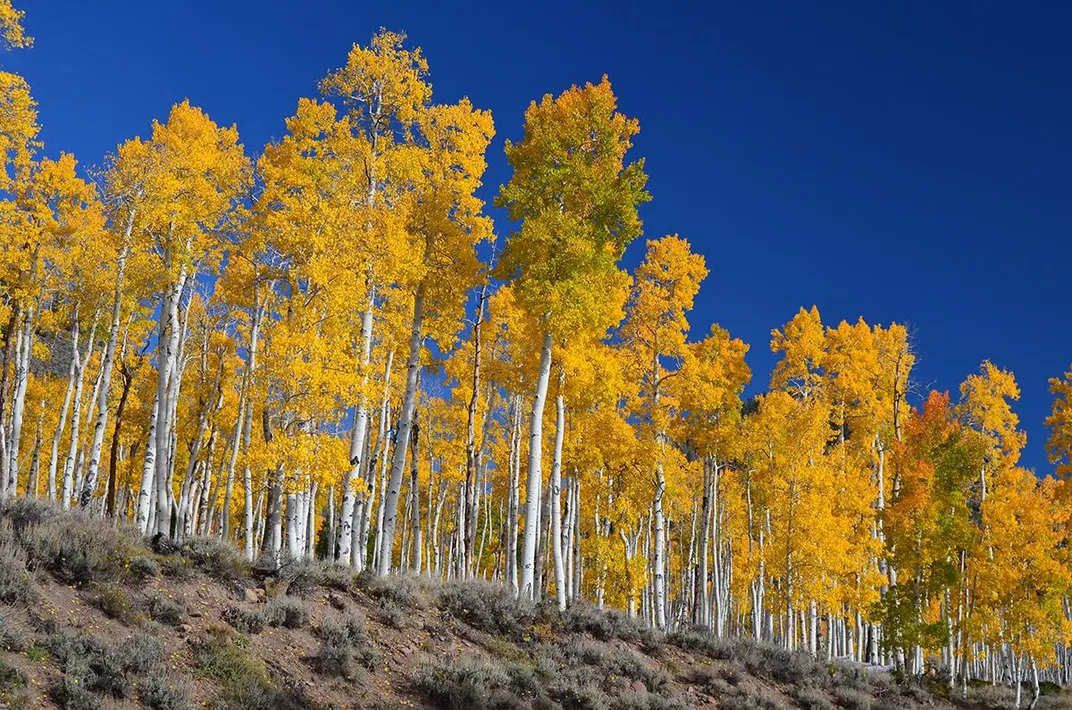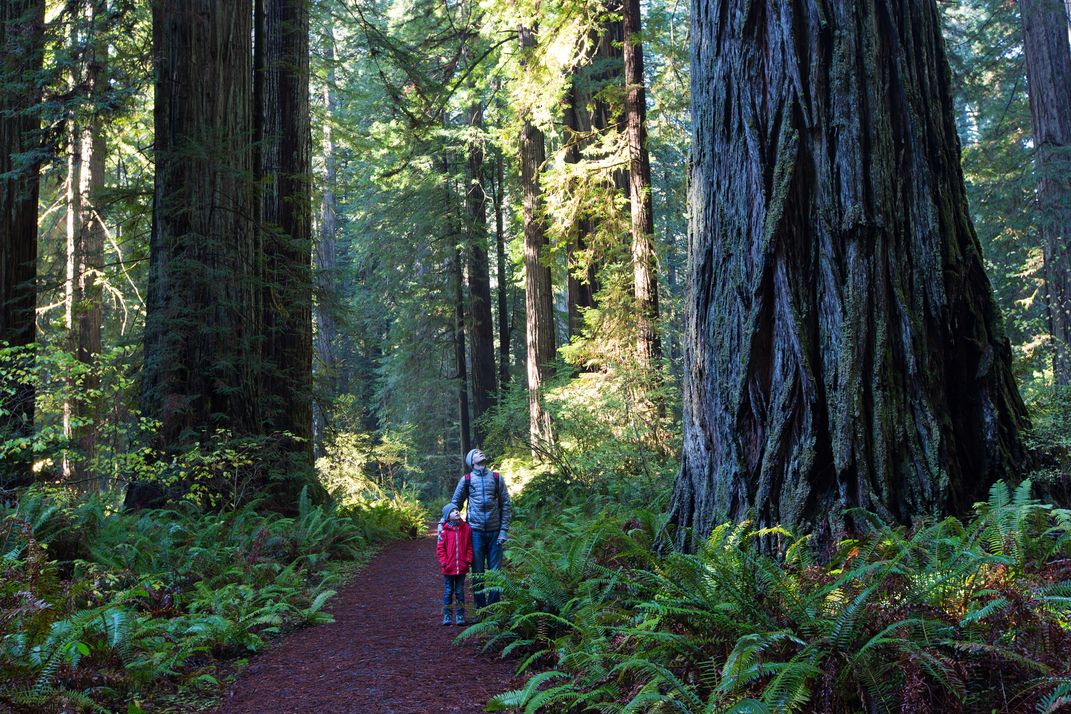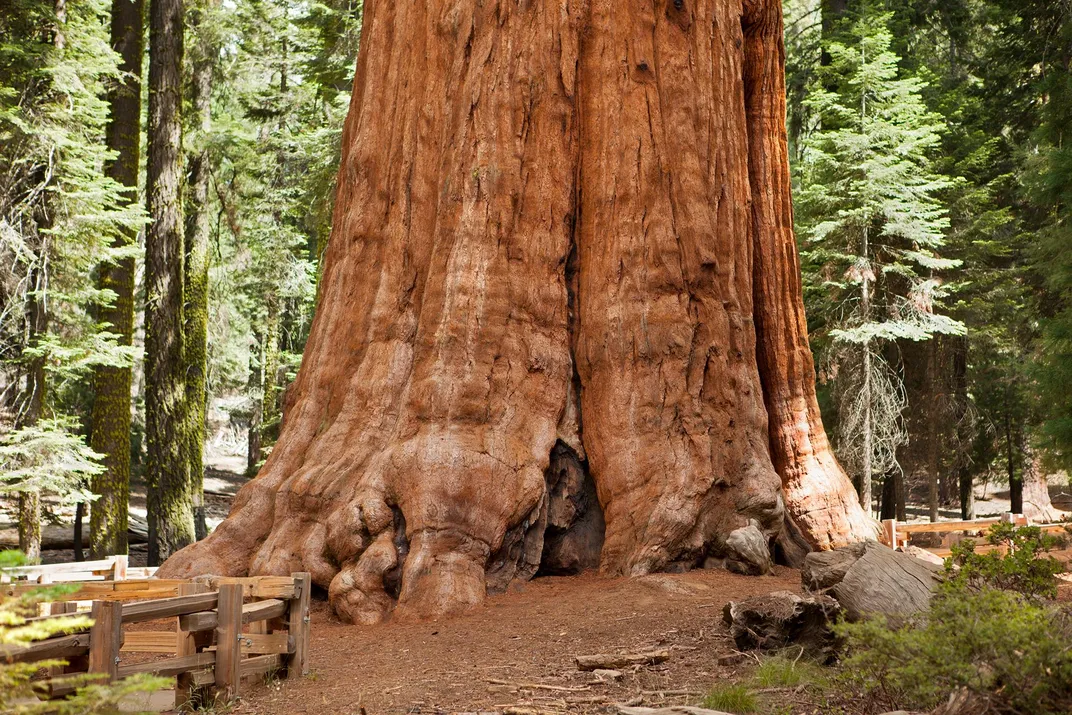Where to Hike to (and Through) the World’s Largest Organisms
Some of the largest organisms will surprise you
/https://tf-cmsv2-smithsonianmag-media.s3.amazonaws.com/filer/5c/98/5c98dea6-67d0-4b86-b52e-404c395e4d0f/aspen-trees.jpg)
From a huge spread of honey fungus in Oregon to a gigantic grove of aspen trees with a single root system in Utah, the world is home to some objectively large living organisms. And thanks to the U.S. Forest Service, many are on protected land allowing tourists to visit. We asked U.S. Forest Service experts from around the country and Tom Mirenda, one of Smithsonian’s museum specialists, which organisms are the largest on the planet. Here’s what they are and where to see them.
Armillaria solidipes, Oregon

Some chefs will adore this, the largest living organism in the world: a mushroom. Technically, it’s a honey fungus, a species that—while reportedly delicious paired with spaghetti—is a danger to gardens, where it colonizes and kills plants and trees. In the Blue Mountains in Oregon, this honey fungus stretches for miles in Malheur National Forest. Mushrooms grow from a thready substance called mycelia that sits just underground, spreading across a region to encourage growth of the fungi fruit. The Armillaria solidipes sprouts yellow-brown mushrooms and infects trees, causing large die-offs in the surrounding area. This particular one covers about four square miles—and scientists estimate its age as between 1,900 and potentially even 8,650 years old. To see it yourself, head to the northeast section of the forest, in the Reynolds Creek and Clear Creek areas.
Pando, Utah

Sometimes a forest is really just one tree—as is the case with Pando in Utah’s Fishlake National Forest. The quaking aspen grove here covers 107 acres and includes about 47,000 distinct trees. But underground, the trees all share a singular root system. Scientists estimate that Pando has been around for about 80,000 to 1 million years, and it’s constantly regenerating itself. Quaking aspens usually die off after 100 to 150 years, but with the massive root system, the individual trunks are able to grow back into new trees. Fun fact: “Pando” actually means “I spread” in Latin. It’s quite appropriate with this grove. Pando is located on State Highway 25, about a mile southwest of Fish Lake.
Hyperion, California

Steve Sillett, scientist and Kenneth L. Fisher Chair of Redwood Ecology at Humboldt State University, measured a particular giant coast redwood in Redwood National Park in 2006, and found that it’s 379.1 feet tall, making it the tallest tree in the world—even taller than the Statue of Liberty, by about 70 feet. Coast redwoods are the stars of the forest world; they’re practically impervious to rot and fire, do not require sunlight to grow, and have no known predators that consume them. As a result, they’ve been around and growing for more than 10 million years on the west coast. In fact, the only real threat to the redwoods is human-initiated. For the tree's protection, Hyperion's exact location is a closely held secret, but park officials say it is located in the Redwood Creek watershed area.
General Sherman, California

Another redwood in California takes its spot as the world’s largest tree by volume. General Sherman, a giant sequoia in Sequoia National Park, has a volume of about 52,500 cubic feet—more than half an Olympic-sized swimming pool. And that metric doesn’t include the branches, since those can fall off. Although it’s the largest in volume, it’s far from the oldest; General Sherman is only about 2,000 years old. Other trees in the forest are credited with having lived lives of more than 3,200 years. To get to General Sherman, take the Main Trail into the Giant Forest Sequoia Grove. The tree is at the end of the path.
Ant Colonies, Worldwide
While giant ant colonies may not fit a traditional definition of a single living organism, Mirenda sees it a different way. “The ant colony is considered a super-organism,” he told Smithsonian.com. “Think of the individual ants more like ‘cells.’” The ants work together to build massive underground cities—such as the one scientists uncovered in Brazil that was once home to one of the largest colonies of ants in the world. Leafcutter ants built this subterranean home by moving about 40 tons of soil, and the finished city measured 500 square feet and extended 26 feet below ground.
Hike among these giant ant colonies in Brazil's Emas National Park, a UNESCO World Heritage site on the central Brazilian Plateau.
/https://tf-cmsv2-smithsonianmag-media.s3.amazonaws.com/accounts/headshot/JenniferBillock.png)


/https://tf-cmsv2-smithsonianmag-media.s3.amazonaws.com/accounts/headshot/JenniferBillock.png)